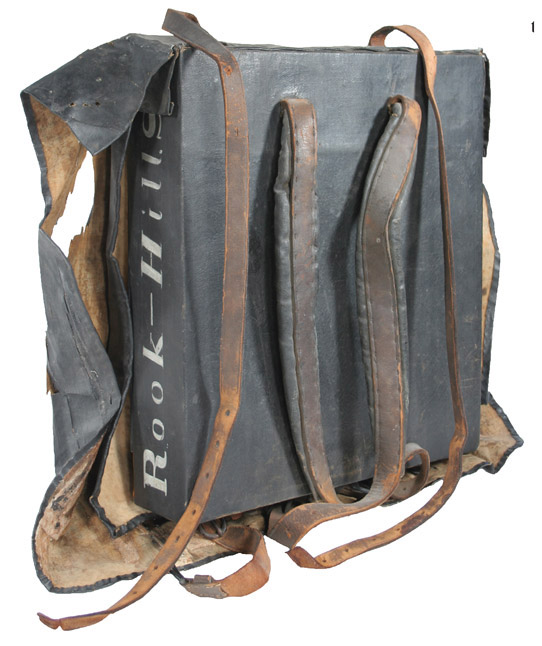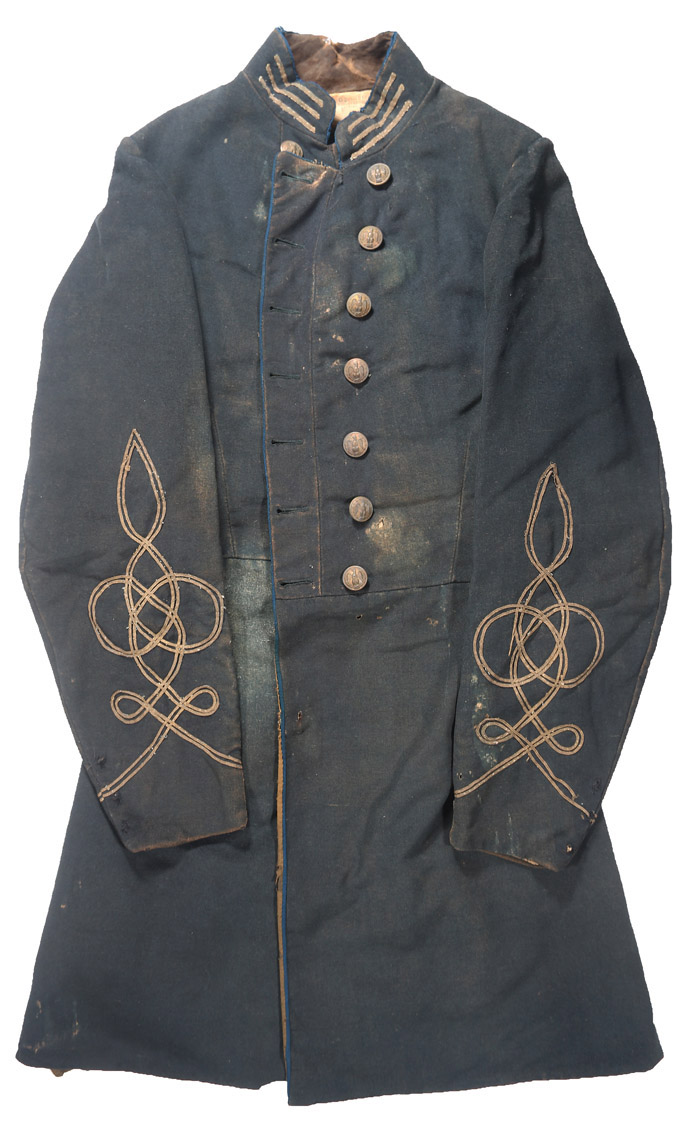
1861

THE FIRING ON AND SURRENDER OF the United States garrison at Fort Sumter ignited a flurry of activity throughout the South. Established militia companies tendered their service to the Confederate secretary of war. Many were ready to leave for war without hesitation. Georgia volunteers were no exception. However, there was one immediate problem that first had to be resolved. Units that had been issued arms and equipment by the state found that Governor Joseph Brown would not allow them to take the Georgia property out of the state. The remedy was to apply to the newly appointed Confederate Chief of Ordnance Josiah Gorgas at the Augusta, Georgia, Arsenal. The arms held there, as well as the arsenal itself, had been seized from the United States and therefore had become the property of the Confederate government. Soon several companies were supplied with United States model 1841 Mississippi rifles.
The rifles were not the only thing they lacked. They also needed knapsacks, haversacks, blankets, flannel shirts, and tents. Suddenly they needed items they had not needed until the prospect of service in the field became a reality. At least two of the company commanders opted to send an order to a dealer in Louisville, Kentucky, and purchase these themselves rather than wait for the state to supply them. One captain chose to circumvent the state and appealed directly to his congressional representative asking for orders to report for duty. As he stated, he was “afraid the war would close” before they had a chance to serve.52
The individual companies that would become the 8th Georgia were mustered into Confederate service on June 3, 1861, under the command of Colonel Francis S. Bartow. On June 5 they departed for Harpers Ferry, Virginia, to aid in keeping the arsenal there, which was not under Confederate control, so that it would not be retaken by United States troops. This turned out to be more of a sightseeing trip as, except for the destruction of the facility, they saw no military action. From there they were pulled back to Winchester, Virginia, where they were brigaded with the 7th and 9th Georgia Regiments, along with two battalions of Kentucky troops and a battery of artillery. They were now the 2nd Brigade of the Army of the Shenandoah. On June 18 the brigade received orders to pack up baggage and shelter tents and prepare two days’ rations. Private Henry C. Harper and his friends in Company E believed they were headed for Beauregard’s Army, then near Manassas Junction, Virginia.53 They couldn’t have been more right. With Colonel Francis S. Bartow in command of the brigade, they reached Manassas in time to be thrown into the first great action of the war. They were placed in the rear of McLean’s and Blackburn’s Ford, which proved to be the center of the battle. In a short time they were caught in the middle of a murderous crossfire for an hour. “The ranks were cut down as grain by a scythe. Whole platoons melted away as if by magic.” Colonel Bartow was killed along with General Bernard Bee, who had ordered the brigade to rally behind the Virginian brigade commanded by General Thomas J. Jackson, where “Jackson was standing like a stone wall.” As the 8th attempted to pull back they were mistaken for Federal troops, probably because of their uniform, and suffered more casualties from friendly fire. They had indeed gotten there before the War “closed.”54


Confederate wooden-frame knapsack of John Thomason, Company C, 11th/9th Volunteer South Carolina Regiment, and lost by him at the fall of Forts Walker and Beauregard at Port Royal in November 1861. Thomason served the rest of the war in the cavalry. His knapsack was brought home as a souvenir by a newspaper correspondent with the Federal Army. A very well-constructed item with a rubberized cloth flap and bed-ticking lining. DON TROIANI COLLECTION
The 8th Georgia, along with Company E, served throughout the war with the Army of Northern Virginia. The uniform shown here is the one they left the state wearing in May 1861. It is typical of that worn by many of the Georgia militia units who received clothing from the state quartermaster. The soldier is holding the Mississippi rifle received from the Augusta Arsenal. His knapsack is the one purchased by his company commander, as is his haversack.Like many militiamen, he has armed himself with a side knife and revolver, both of which will be considered excess baggage in the hard months and years ahead.

Astamped brass breastplate, a device the cadets of the Georgia Military Institute used with the crossed shoulder web belt. The stamped brass circular insignia with a pin back contains a beaded border with “G M I” around a six-pointed star. In 1864 the cadets were accepted into the state militia and fought with the Confederacy during the Atlanta campaign and the march to Savannah. MARIETTA MUSEUM OF HISTORY, KENNESAW HOUSE, MARIETTA, GEORGIA, WILLIAM ERQUITT PHOTO

This early-war regulation North Carolina captain of staff’s frock coat bears the tailor’s label sewn in the collar, which reads: “M. Grausman, Merchant Tailor, Raleigh, N.C.” It is piped in blue on the front and has Confederate States staff buttons on the front, most likely indicating the wearer was transferred from the infantry to a staff position. JAN GORDON COLLECTION